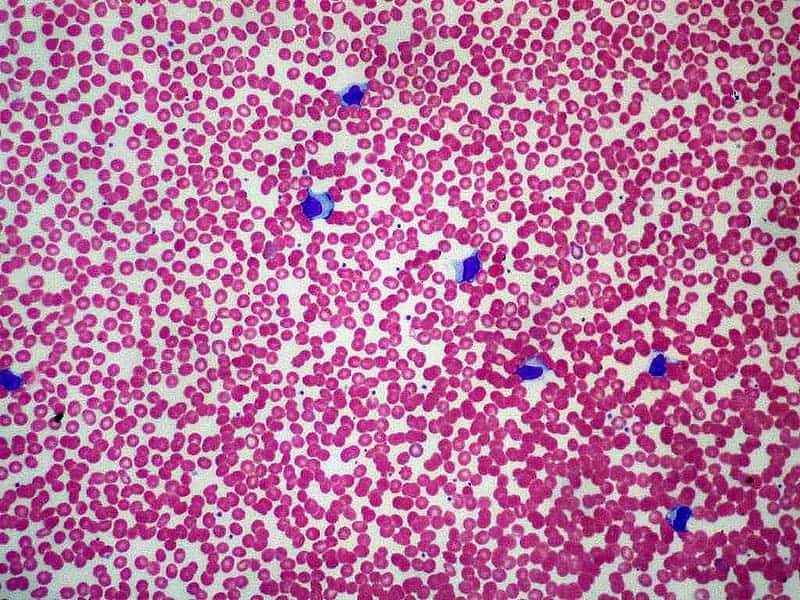
Multiple sclerosis (MS) is a debilitating disease that affects roughly 3 in 10,000 people worldwide. MS is an autoimmune disease, meaning the immune system mistakenly attacks a healthy part of the body – in this case, the brain or spinal cord of the nervous system. But the root cause of the condition has so far escaped scientists — until now. According to a massive study involving more than 10 million military personnel in the United States, scientists at Harvard University have singled out infection with the Epstein-Barr virus (EBV) as the likeliest trigger of MS.
“The hypothesis that EBV causes MS has been investigated by our group and others for several years, but this is the first study providing compelling evidence of causality,” said Alberto Ascherio, professor of epidemiology and nutrition at Harvard Chan School and senior author of the study. “This is a big step because it suggests that most MS cases could be prevented by stopping EBV infection, and that targeting EBV could lead to the discovery of a cure for MS.”
Epstein-Barr: harmless to most of us, but potentially debilitating for some unlucky few
The Epstein-Barr virus is a member of the herpes family and one of the most common human viruses, with more than 9 in 10 people carrying it. It is primarily transmitted through saliva, when people kiss or share the same drinks and silverware. The double-stranded DNA virus infects B lymphocyte cells, sometimes causing mononucleosis, also known as “the kissing disease”, which is usually a very mild condition. Although many people are exposed to EBV and carry the virus in their bodies for their entire life, the vast majority experience no symptoms.
But although mono is a trivial condition, some researchers have proposed that the ubiquitous EBV could be responsible for the much more serious multiple sclerosis. MS, a chronic inflammatory disease of the central nervous system, attacks the myelin sheaths that protect neurons in the brain and spinal cord. It’s most commonly diagnosed in people in their 20s and 30s, when symptoms like fatigue and difficulty walking start setting in, which can progress into debilitating complications that can result in paralysis.
However, establishing a causal relationship between a virus that virtually infects the entire population of the globe and MS is incredibly challenging. There are more people with EBV than those who brush their teeth every morning, for instance, and linking toothpaste with MS would sound pretty out there.
The EBV-MS link isn’t that preposterous, though — in fact, we now have the strongest evidence yet that the virus may indeed cause the neurodegenerative disease.
All US military recruits have their blood drawn when they first join the army, which is tested for any common infections and is then stored for later testing, such as those screening for Epstein-Barr infections. The Harvard researchers found that only 5% of the recruits didn’t have the virus at their first blood draw.
Out of 10 million military personnel included in the study, 955 of them went on to develop MS about a decade after their first blood sample was taken. Only one MS patient tested negative for antibodies against the Epstein-Barr virus, meaning they were never infected. Another 34 patients didn’t have the virus when they first joined the army but later caught it before being diagnosed with MS.
The researchers found that the risk of MS increased 32-fold after infection with EBV but remained unchanged after infection with other viruses. Serum levels of neurofilament light chain, a biomarker of the nerve degeneration typical in MS, increased only after EBV infection.
According to the study, published this week in the journal Science, no other risk factor for MS can explain the patterns seen in this cohort. The findings suggest that EBV is the leading cause of MS, the authors concluded.
A vaccine for multiple sclerosis?
It can take many years between the onset of MS following an Epstein-Barr infection, but the researchers think this apparent delay can be explained by the fact that very early stages of MS are undetected because the initial symptoms are so mild – if they appear at all. The evolving relationship between the virus and the host’s immune system also plays a role, since Epstein-Barr is a dormant virus that is activated and deactivated multiple times during a person’s life.
There is no treatment or prophylactic for EBV, although Moderna is developing an mRNA vaccine for EBV using the same technology employed for their COVID serums. Earlier this year, Moderna started trials for this EBV vaccine with human volunteers.
“Currently there is no way to effectively prevent or treat EBV infection, but an EBV vaccine or targeting the virus with EBV-specific antiviral drugs could ultimately prevent or cure MS,” said Ascherio.
Individuals who contracted EBV later in life and reported infectious mononucleosis are much more likely to develop MS in their lifetime compared to the majority of people who are first infected with EBV in the first few years of life. Furthermore, MS patients who have undergone cell depletion therapies have seen their symptoms improve. These are the same cells that the Epstein-Barr virus latently infects, strengthening the link between the virus and MS.
As a caveat, the findings of the new study are by no means definitive proof that EBV causes MS. The relationship between the two could be probed further by investigating the effects of preventing Epstein-Barr infections on MS incidence.
In all likelihood, MS is caused by multiple factors, with Epstein-Barr being just one of them. For instance, only one in 10,000 recruits from the study went on to develop MS. This suggests that there are other vulnerabilities at play, on top of the EBV infection, which could be genetic in nature.









